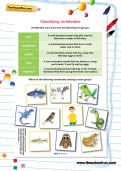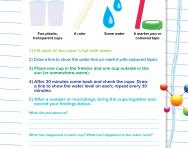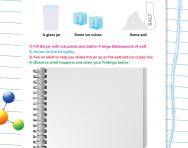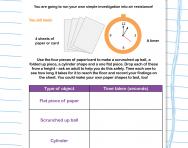What is a fair test?

What is a fair test?
A fair test is a controlled investigation carried out to answer a scientific question.
What do children learn about fair tests in primary-school science?
In a fair test two or more things are compared. In order for a test to be fair or scientifically sound, children are required to ensure only one thing (this is called a variable) is changed.
For example, if testing which material is the most waterproof by pouring liquid onto a selection of different materials, in a fair test only the type of material (the component you are testing) should be changed.
Therefore all other variables (the type of liquid used, the amount of liquid used, the distance the liquid is poured from, the speed at which it is poured and the size of the material) must remain the same each time the test is carried out. It would be unfair or an unscientific test if, for example, 1000ml of water were poured onto a piece of foil and 2ml of milk poured onto a piece of foam – you would not be able to fairly compare the materials.
When do children learn about scientific methods of testing?
Fair testing is taught throughout primary school through other science topics. The children will gradually develop their skills and level of independence in planning and carrying out fair tests.
In Years 1 and 2 (Key Stage 1) children will be taught to perform simple tests.
In Years 3 and 4 (Lower Key Stage 2) children will be taught to set up simple comparative and fair tests.
In Years 5 and 6 (Upper Key Stage 2) children will be taught to plan scientific enquiries to answer questions and to control variables where necessary.


Download fantastic science resources today!
- Experiments And Science Fun pack
- Science Learning Programme for each school year
- All the instructions, questions and information you need
How is fair testing taught?
How to carry out a ‘fair test’ is taught throughout the science curriculum and not as a separate topic. Children will explore fair testing as a method of investigating questions within the science topics they are studying (for example plants, soils, light and sound, materials, electricity or forces).
A fair test begins with a question. This might be given to the class by the teacher or children may be asked to think of their own question to investigate (usually in Years 5 and 6).
Children will usually work in small groups to plan, carry out, take measurements, record results and write a conclusion. The children may be supported in different ways depending on age and ability. The planning stage may involve discussing the method and completing an investigation sheet to identify the variable (thing) they will change and what must stay the same to make it a fair test. Children may be given or create their own diagrams or tables to record results on.
During the investigation children will use equipment to take measurements or record their observations. Often bar charts or line graphs will be drawn up before a conclusion is made.
Put fair testing into practice with activities to do at home
At home you could plan and carry out your own fair tests with your child. Here are some suggestions to get you started;
- Which type of chocolate melts fastest? (Always remember to supervise children if they are working with hot liquids.)
- Which magnet is the strongest?
- Which material is most suitable for an umbrella?
- Does a plant need light to grow?
- How can you go faster down a slide?
- Which kitchen towel absorbs the most liquid?
- Which shaped ice cube melts the fastest?
For each investigation consider what variable will change and which variables need to remain the same to make it a fair test. Think about what you are measuring. What equipment do you need? Can you make a prediction (a good guess, with a reason) before you begin?
Watch this great clip of school children carrying out and explaining a fair test on magnets:
Watch this little clip of an investigation into which type of chocolate melts fastest:

Give your child a headstart
- FREE articles & expert information
- FREE resources & activities
- FREE homework help









